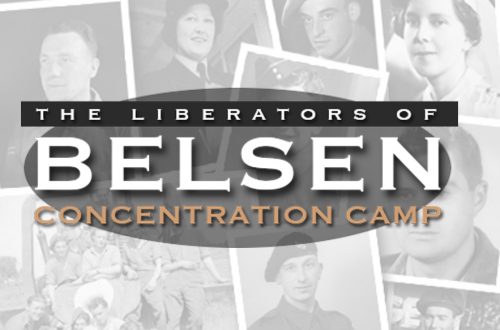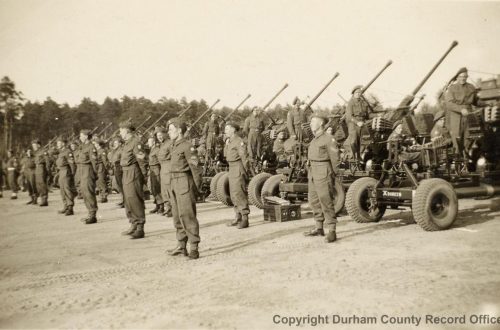
Gilbert King, 249 Battery (Oxford Yeomanry) RA
There were tears as the Jewish men and women once held at the infamous Bergen-Belsen concentration camp in Germany met Gilbert King, 96, who is one of only three former soldiers still alive of those who took the camp for the Allies in April 1945.
Several of the men and women were in tears as former Gunner King told of the horrors he and his unit, the 249 (Oxfordshire Yeomanry) Battery, Royal Artillery, faced when they entered the camp on April 15, 1945.
They were brought together in Woodstock, Oxfordshire, where the new Soldiers of Oxfordshire Museum documents the history of his and other local units, including the concentration camp’s liberation.
Susan Pollack, 83, was a teenager in the camp, having been sent there from her native Hungary, where she had lived with her family in a small village near Budapest.
After meeting and thanking King, she said: “These people, the liberators, they represent to me the real truth about heroism − that they had a duty to do, a job to do, and yet they had the kindness and the goodness to attend to our needs with such wonderful, kind, devoted feelings.
“They were the first ones actually, who kind of restated that… the world outside has not been polluted with that venom and that evil that we experienced.
“Because we, I, was so dehumanised. And then to be confronted with the liberators, it was an incredible feeling.”
Some 70,000 people died at Bergen-Belsen, between Hamburg and Hanover in Northern Germany, between 1941 and 1945, including Jews from all over Europe and also Soviet prisoners of war. It was eventually liberated by the British on April 15, 1945, just weeks before the end of the war. Today it is a place of remembrance visited by hundreds of thousands of people each year.
The group who met King were all members of the Jewish Care charity’s Holocaust Survivors Centre in Hendon, North London.
“I shall always remember one thing, that one of the inmates came up to me, bent down and kissed my boots”
Several of them have committed testimony and pictures to the new €4.4 million museum’s display, which was created with the help of the Holocaust Educational Trust.
Renee Salt, a Polish Jew who survived Belsen and Auschwitz, was so ill she was unconscious when the camp was liberated.
She was 15 at the time and lost her mother 12 days after liberation when, like many other, she died from malnutrition and starvation she suffered at the hands of the Nazis.
Salt, who turned 85 yesterday, said meeting King and seeing the museum brought back memories of her time in Belsen, where they were taken by the Nazis “to finish us off”.
“Not that you ever forget, you live with it, I do,” she said.
“But you know seeing everything, it brings it all back, the memories, it is very sad.
“I did thank him for liberating us. In fact my husband was in the British police, the army police, and he was also at the liberation of Bergen-Belsen so I know everything they did.
“It was interesting to listen to someone else as well.”
The Oxfordshire Yeomanry only stayed at Belsen for seven days, helping give medical help to survivors, before carrying on to keep fighting the German army.
But their time there was long enough to experience some of its horrors.
King, who lived in Holmer Green, Buckinghamshire, before the war, told the survivors what he had seen as he and his unit arrived at the camp. He described seeing “thousands and thousands” of bodies piled deep between the huts, but also the happiness on the face of the living at being freed.
“We entered the camp and were met by the all the joy in the faces of the inmates who hadn’t been in there very long,” he said.
“I shall always remember one thing, that one of the inmates came up to me, bent down and kissed my boots.
“This was very emotional to me, a thing I shall never forget, very emotional.
“As we proceeded into the camp we met with horrors, the horrors that Belsen gave out. There were bodies all over the compound, just skin and bone, just laying there rotting away.”
Archive: Times, Malta
August, 2014
6,264 total views



